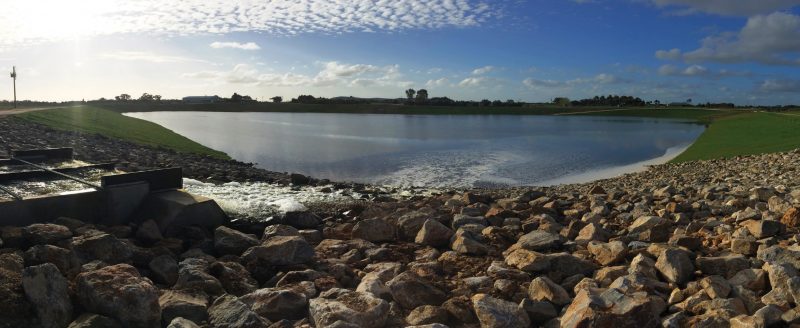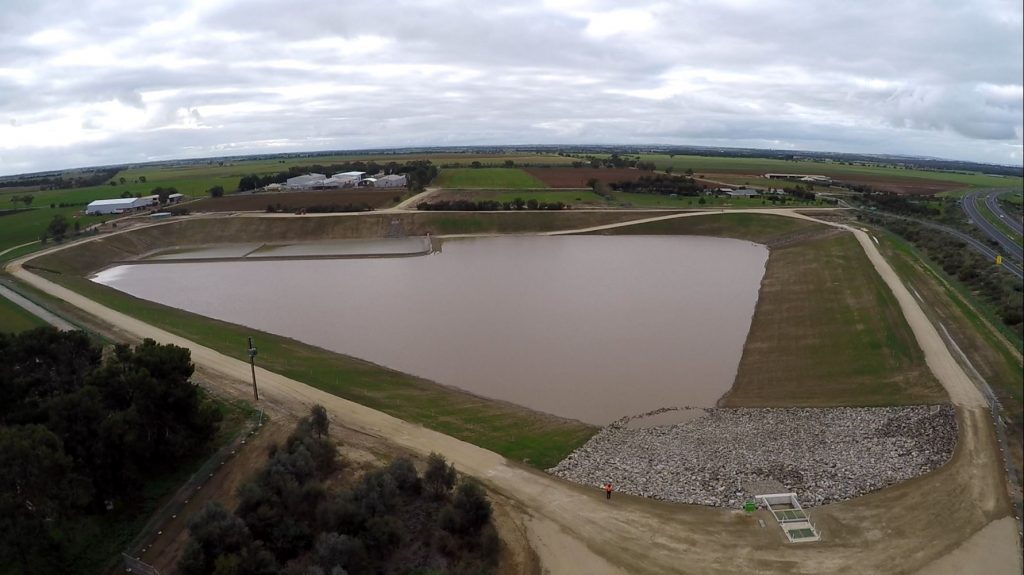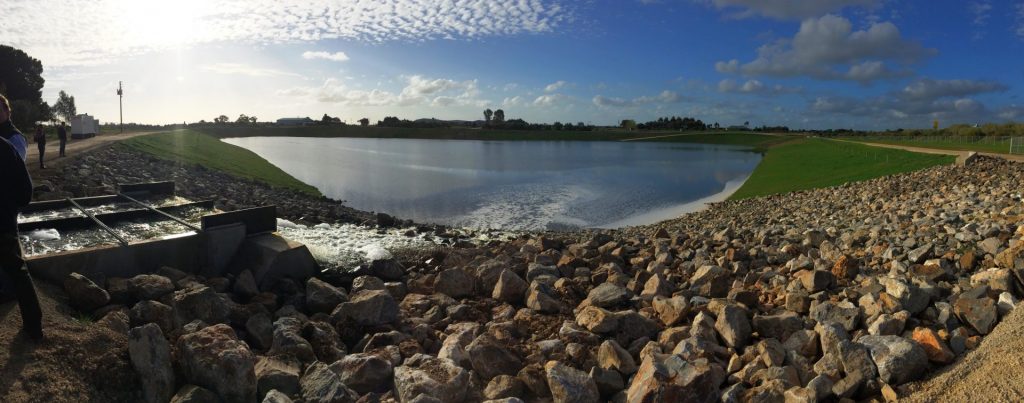Gawler River Water Reuse

The Gawler River Water Reuse Scheme (GWRS) is a $22 million Project which has emanated from the creation of a large borrow pit adjacent the Gawler River, excavated to source fill material for the construction of the Northern Expressway. The pit provided a significant opportunity to harvest urban stormwater runoff from the Gawler River catchment when flows are above the environmental threshold (616L/s), store in the nearby high performance Kangaroo Flat underground aquifer and make available for reuse in surrounding areas for urban and primary industrial use.
The Australian Government’s National Urban Water and Desalination Plan provided a sound program to fund an initial feasibility study into the Project and then part of the capital for the design and construction of the infrastructure to implement the recycled water scheme, with targeted operation in August 2016.
The capped Australian Government project funding of $10.7 million encouraged the regional Councils to approach the private sector for involvement to implement the scheme without significant burden on local government resources. After a successful open procurement process, the preferred private partner (Aqua Australis Group— AAG) was unable to secure enough water customers to continue.
With marginal time remaining to deliver the Project and to ensure the Australian Government funding was not lost, a bulk water “Foundation” supply agreement with Seppeltsfield Wines (the ‘Foundation Customer’) and Light Regional Council was negotiated. This followed the withdrawal of the other regional Councils that had varying circumstances to commit capital to fund the Project in the lead up to Council elections.
Light Regional Council borrowed $11 million from LGFA via a Cash Advance Debenture Facility;
- Which allows funds to be progressively drawn during the construction of the project;
- The borrowing can be on a floating or fixed rate basis; and
- Any floating portion can be repaid at any time unlike a standard fixed rate debenture borrowing.
Under the new partnership, Bunyip Water Pty Ltd was formed to design, construct and operate the scheme inclusive of securing water customers. Under a Loan Agreement with the Council, Bunyip Water will borrow the entire Project funds in order to implement the scheme and has the option of taking control of the infrastructure (and associated water licenses) after 6 or 10 years by paying out the loan principal in full.
The Scheme is estimated to provide Council an average annual surplus of between $350,000 and $1.3 million and when sold in 2022 or 2026 a capital gain of $10 million plus.
The infrastructure has been designed to substitute, on average, at least 800 ML/a of River Murray water used in the Western Barossa with urban stormwater harvested from the Gawler River. The transfer pipes will convey peak flows of up to 13ML/day to above ground and aquifer storages, providing flexibility to best match predominantly winter supply with typical summer demand.
The scheme will improve primary production in the region. The scheme will also provide higher quality water for urban recreation use in and around Hewett (~50 ML/a). The initial scheme infrastructure stretches from the Gawler River right through to the south-western Barossa Valley and will consist of around:
- 40km of underground pipes;
- 2 above ground storage dams;
- 5 pump stations;
- several Managed Aquifer Recharge bores;
- 2 above ground tanks.
The Project benefit’s Council through innovative investment on income generating infrastructure having real market value, which can be used to improve other service provision without relying totally on general rating revenue.
It promotes local and regional economic development using sustainable resources. Immediate opportunities include the potential for nearby constrained stormwater catchments (Kingsford Regional Industrial Estate and Roseworthy Township Expansion) to be managed more efficiently.
Future interconnection with the Virginia Pipeline Scheme (VPS) in order to access recycled water from SA Water’s Bolivar Wastewater Treatment Plant and the Barossa Infrastructure Limited (BIL) scheme can provide even longer term water security for the region in dry years.
This also creates opportunity to transport larger volumes of recycled or fresh water between the east (currently serviced by the BIL scheme) and the west (serviced by the VPS) to match supply with customer demand.
When the Project is completed and the Scheme is fully operational it will be known as “BUNYIP WATER”.
Information supplied by Kieren Chappell Manager Assets and Engineering









